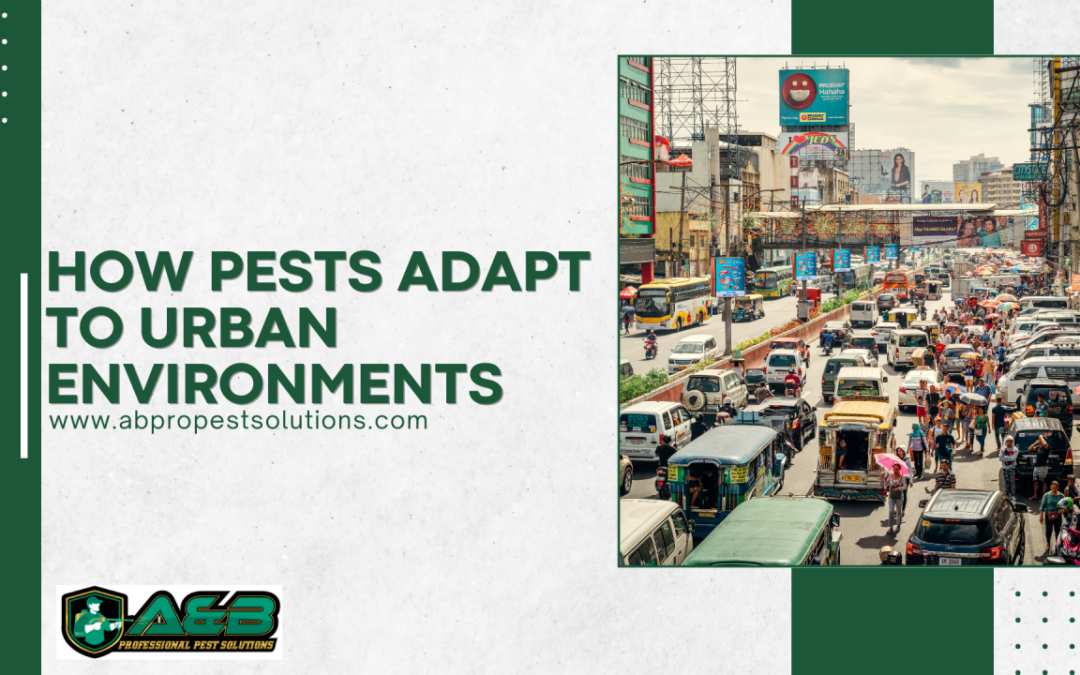Urban environments provide unique opportunities and challenges for pests. As cities grow and develop, pests have become increasingly adept at exploiting human-made environments to survive and thrive. Understanding how pests adapt to urban life can help pest control professionals stay ahead of infestations and protect homes and businesses. Here are some key ways pests adjust to city living:
1. Utilizing Shelter
Cities are full of hiding spots that pests can exploit. Cracks in buildings, sewers, basements, and even furniture provide excellent shelter for pests like cockroaches, rodents, and bed bugs. These spaces shield them from predators and extreme weather, creating ideal conditions for breeding and survival.
2. Exploiting Food Sources
Urban areas offer an abundance of food sources, from unsealed garbage bins to leftover crumbs in kitchens. Rats, ants, and cockroaches have become experts at finding and accessing food in homes, restaurants, and other establishments. Their ability to consume a wide variety of food items gives them a significant survival advantage.
3. Adjusting Reproductive Strategies
Pests in urban environments often exhibit rapid reproduction to maintain their populations in the face of challenges such as pest control measures. For instance, bed bugs can lay dozens of eggs in protected areas, ensuring their numbers can rebound quickly.
4. Developing Resistance to Chemicals
Over time, many urban pests have developed resistance to common pesticides. This evolutionary adaptation makes traditional pest control methods less effective, requiring professionals to develop innovative strategies and use integrated pest management techniques.
5. Adapting Behaviors
Urban pests often change their behavior to avoid detection and eradication. For example, some rodents have become nocturnal to avoid human activity. Similarly, cockroaches can learn to avoid traps and bait after encountering them repeatedly.
6. Leveraging Human Activity
Human behaviors often inadvertently support pest survival. Poor sanitation, cluttered spaces, and the transportation of goods can help pests spread and thrive. For instance, bed bugs commonly hitchhike on luggage, furniture, and clothing, moving from one location to another undetected.
7. Surviving in Extreme Conditions
Urban pests have shown remarkable resilience in extreme environments. Some pests can withstand higher levels of pollution, limited water sources, and fluctuating temperatures. Their ability to adapt to these harsh conditions ensures their survival even in the most challenging urban settings.
How to Stay Ahead of Urban Pests
To effectively combat urban pests, it’s essential to:
- Practice proactive sanitation: Keep spaces clean and free of food debris to eliminate attractants.
- Seal entry points: Close gaps, cracks, and crevices in buildings to limit pest access.
- Use integrated pest management (IPM): Combine chemical and physical methods for a comprehensive approach.
- Stay informed: Regularly consult with pest control professionals to identify and address potential infestations early.
Partner with Professionals
Urban pests are resourceful, but with the right strategies, they can be managed effectively. At A&B Professional Pest Solutions, we specialize in understanding pest behavior and implementing tailored solutions to keep your home or business pest-free. Contact us today to learn more about our services and how we can help you tackle urban pest challenges.
To know more about A&B’s services, please visit the A&B’s website (www.abpestsolutions.com.ph) or Facebook Page (https://www.facebook.com/ABPestSolutions/) to know more about their services. A&B also disinfects workplaces or houses to kill COVID-19 Virus.
You may also contact: +63 905 496 4550 and +63 951 062 4830
A&B Professional Pest Solutions Corporation is located at the Ground Floor of Monterey Building at Genesis St., Centro de San Lorenzo, Santa Rosa, 4026 Laguna, Philippines

